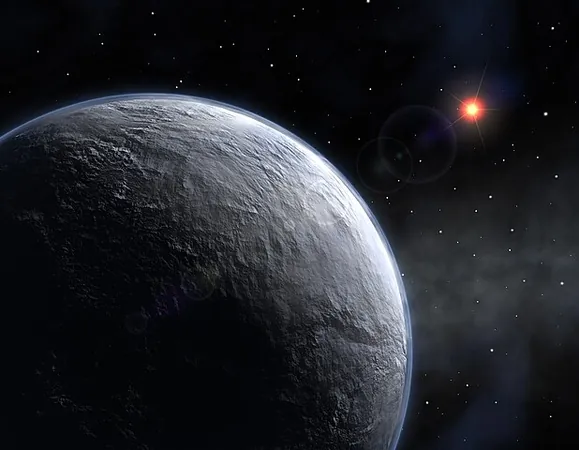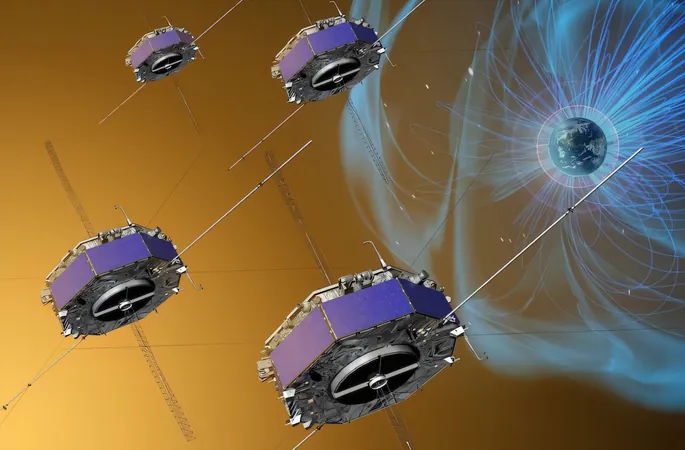
Astronomers Unveil the Hidden Universe of Minor Planets: Are We Underestimating Their Existence?
2024-11-25
Author: Daniel
The Search for Minor Planets
In the vast expanse of our galaxy, astronomers have primarily focused on detecting larger exoplanets, often overlooking their smaller counterparts. Techniques used for exoplanet observation tend to highlight planets with at least twice the mass of Earth, which is approximately 12 septillion kilograms. Yet, the mystery remains—what about the smaller planets, or as astronomers refer to them, "sub-Earths" or "minor planets"? These elusive worlds are harder to detect with current technology, leading scientists to employ simulations to understand their potential abundance and behavior within planetary systems.
Simulations and Findings
Recent research by a team of astronomers aimed to simulate the conditions under which these minor planets could exist. Their objective? To provide insights into where and how frequently these small celestial bodies could form. By using sophisticated simulation codes that mirror actual observed exoplanetary models, the researchers ran an impressive 33 sets of 1,000 simulations—each tailored with different starting parameters to reflect a variety of stellar environments.
The core of their research focused on stars that ranged from half to five times the mass of our Sun—reflecting the majority of stars found in the Milky Way. For the first simulation set, they replicated conditions similar to our solar system, successfully demonstrating that minor planets could indeed form under those parameters. The astronomers then varied conditions regarding the host star's mass, the initial distribution of mass in the protoplanetary disk, and gas-to-dust ratios.
Remarkable Patterns and Their Implications
Throughout their expansive simulations, the team discovered some remarkable patterns. Importantly, they found that systems composed entirely of minor planets—ranging from one to one ten-millionth of Earth’s mass—could easily emerge. This finding led the scientists to speculate that our current estimations of planetary formation around stars may seriously underestimate the actual prevalence of these smaller planets.
One of the most surprising revelations was the pivotal role of dust availability in determining the growth of minor planets. While an abundant supply of dust fosters planet formation, if the initial dust exceeds 100 times Earth’s mass, the formation process halts entirely. This balance of material is critical to the survival and growth of these small celestial bodies.
Future Expectations and Limitations
The researchers also examined the future of these minor planets, particularly those located in the outer regions of a planetary system—distances exceeding ten times that of the Earth to the Sun. They determined that although these planets might not grow larger than a small moon, they possess the resilience to survive even as their host star undergoes expansion at the end of its life cycle.
However, it's vital to note the study's limitations. The astronomers faced computational constraints that capped their simulations to 1,000 objects at a time, and they did not account for the accumulation of ice and rocks at the peripheries of their simulated star systems, factors that could impact planet formation dynamics.
Conclusion and Future Research
With these findings, astronomers are not just expanding our understanding of planetary systems but igniting a conversation about the abundant yet hidden worlds surrounding us. Could there be a multitude of minor planets waiting to be discovered? As technology advances and our observational methods improve, the cosmic dance of these elusive worlds may finally be revealed, reshaping our comprehension of the universe's diversity.
Stay tuned as we delve deeper into the fascinating world of exoplanets, where every discovery opens a new chapter in the story of our universe!




 Brasil (PT)
Brasil (PT)
 Canada (EN)
Canada (EN)
 Chile (ES)
Chile (ES)
 España (ES)
España (ES)
 France (FR)
France (FR)
 Hong Kong (EN)
Hong Kong (EN)
 Italia (IT)
Italia (IT)
 日本 (JA)
日本 (JA)
 Magyarország (HU)
Magyarország (HU)
 Norge (NO)
Norge (NO)
 Polska (PL)
Polska (PL)
 Schweiz (DE)
Schweiz (DE)
 Singapore (EN)
Singapore (EN)
 Sverige (SV)
Sverige (SV)
 Suomi (FI)
Suomi (FI)
 Türkiye (TR)
Türkiye (TR)